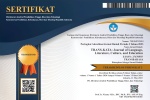Author Guidelines
The manuscript should be an original research paper that sufficiently contributes novelty to Language, Literature, Culture, and Education. Authors are requested to submit their articles electronically by using the TRANS-KATA: Journal of Language, Literature, Culture, and Education online submission procedure. The corresponding author should also state that the manuscript is not concurrently being considered for publication elsewhere. The Editors will ignore submissions that do not follow these procedures.
Structure of the manuscripts
Manuscript length: The article should fall within the range of 5000 to 7000 words, encompassing tables, figures, and references. For review articles, the word count should ideally range from 3000 to 5000 words.
Title: The title should be clear, informative, and no more than 12 words.
Author's Names and Institutions: Provide the names of the authors along with their affiliated institutions and email addresses. Do not include any academic titles. In the case of a joint paper, designate one author as the corresponding author.
Abstract and Keywords: The abstract should be concise and limited to 200 words. It should include the aims, methods, and results of the study. Provide both English and Indonesian versions of the abstract. Include 3 to 5 keywords or phrases.
Introduction: The introduction section should provide the background of the study, a review of previous research in the area, and the aims of the manuscript. Emphasize the significance and novelty of the study. This section should comprise 15-20% of the total article length.
Methods: Describe the tools of analysis, data sources, and methodology used in the study. This section should account for 10-15% of the total article length.
Results and Discussion: Present the results of the study clearly and concisely. Discuss the novelty or contribution of the work to the field of language, literature, culture, and education. This section should constitute 40-60% of the total article length.
Conclusion: Conclude the manuscript and provide any policy implications resulting from the study. Present the conclusions in the same order as discussed in the body of the manuscript.
References: List all the papers, books, or other publications referenced in the manuscript. Follow the APA (American Psychological Association) style for citations and references. Include approximately 20-25 primary and up-to-date references to contribute to knowledge development.
General Writing Format
- Use A4 paper, double-sided, and single-line spacing.
- Start a new paragraph with five characters indented from the left margin.
- Use 12-size Times New Roman font.
- Write the manuscript in English.
- Keep the manuscript between 13 to 16 pages (6000-8000 words).
- Set the top and bottom margins to 1.5 cm and 0.8 cm, respectively.
- Use capital letters only for the first word of the title or memorable names.
- Main headings should be BOLD AND UPPERCASE, sub-headings Bold and Capitalize Each Word, and sub-sub-headings Bold, Italic, and Capitalize Each Word.
- Capitalize the first word of subtitles and unique names.
- Use italics for sub-subtitles, capitalizing each word except for connecting words.
- Number equations and formulas as (1), (2), etc., appearing to the right.
- Do not present estimation results from software packages directly; provide them in summary tables.
Tables and Figures
- Number tables and figures using the Arabic numbering system.
- Place the table title at the top and the figure title at the bottom.
- Provide the source of information, if applicable, at the bottom of tables.
- Tables should have only row lines without column lines.
- Include appropriate notes and sources underneath the table.
Acknowledgment
Include acknowledgments, if any, as a footnote to the manuscript's title.
Subjects and Authors Index
Provide an index of subjects, listing specific terms used in the manuscript. Additionally, provide an index of authors, mentioning key authors of papers referred to in the manuscript. Use the family name followed by the given name.
In-Text Citation
Use the family name and publication years for in-text citations. Follow the APA 7th style. For example:
1. Hill (2001) suggests that the objective of depreciation is...
2. Inflation targeting would be sufficient (McCain, 1982).
3. The definition of contagion is... (Wagner, 1976; Rhonda, 2009)..
4. Smith et al. (2020) found that... (et al. is used for in-text citations when there are more than two authors. The reference list entry includes all authors' names up to 20 authors, after which an ellipsis is used before the final author).
References
Journal Article: Smith, J. A., Brown, K. L., & Johnson, P. R. (2020). The impact of social media on academic performance. Journal of Educational Psychology, 112(4), 567-580. https://doi.org/10.1037/edu0000380
Book: Jones, M. T., & Richards, L. P. (2018). Understanding human behavior: A cognitive approach (3rd ed.). Springer.
Conference Paper (Published in Proceedings): Davis, S. L., & Martinez, G. A. (2022). Enhancing student engagement through virtual learning environments. In J. T. Nguyen (Ed.), Proceedings of the International Conference on Educational Innovation (pp. 45-53). Springer. https://doi.org/10.1007/978-3-030-56789-2_6
Conference Paper (Unpublished): Garcia, L. R., & Wilson, K. P. (2021, June 15-18). The role of artificial intelligence in modern education [Paper presentation]. Annual Meeting of the American Educational Research Association, San Francisco, CA, United States.
Thesis/Dissertation: Chen, H. W. (2019). The effects of bilingualism on cognitive development in children (Master’s thesis). University of California, Berkeley. ProQuest Dissertations and Theses database. (UMI No. 2763459)
Internet Source: National Institute of Mental Health. (2021, April 5). Depression: What is depression? https://www.nimh.nih.gov/health/topics/depression/index.shtml
Note: It is highly recommended to use Mendeley for managing references and citations.
Template Link: For more details, please refer to the TRANS-KATA manuscript template.




